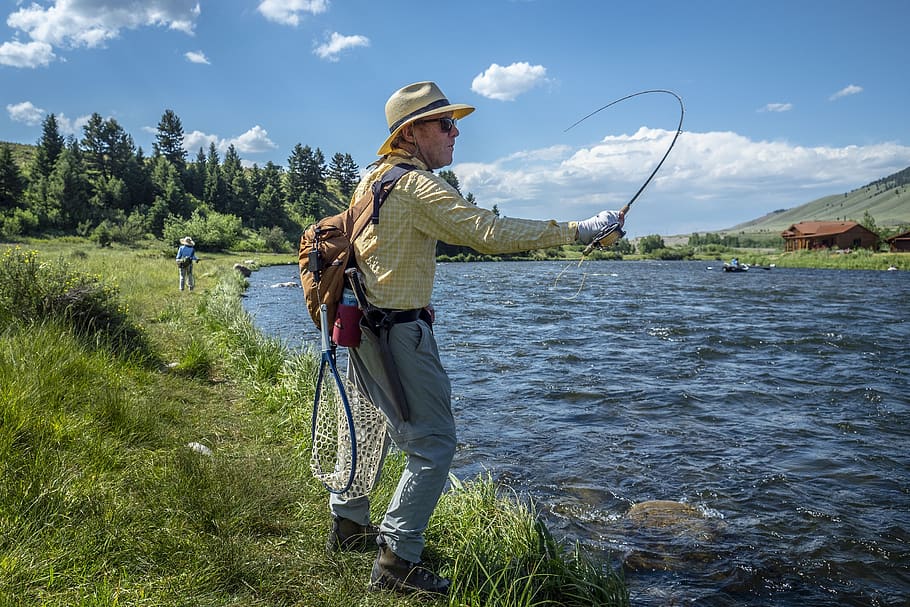Never Changing Fly Fishing Cast Will Eventually Destroy You
The RIO Bonefish 8-weight line has a 7-foot front taper, a 28.5-foot belly and a 9-foot rear taper for a total head size of just below forty five feet. The Scientific Anglers Mastery Bonefish 8-weight line, for example, has a 5.5-foot entrance taper, a 26.5-foot belly and a 10-foot rear taper for a complete head size of forty two toes.
 The SA Ultra three Bass/Saltwater 8-weight, in comparison, has a 4-foot front taper, a 23-foot belly and a 3-foot rear taper for a complete head length of 30 toes. That is like fixing your imaginative and prescient on the head of the lead mallard in a passing flock. The Mastery Bonefish’s longer tapers and belly are designed to throw more line, and those who prefer to measure their casts earlier than the final delivery, as is commonly the case in sight-fishing situations, desire these.
The SA Ultra three Bass/Saltwater 8-weight, in comparison, has a 4-foot front taper, a 23-foot belly and a 3-foot rear taper for a complete head length of 30 toes. That is like fixing your imaginative and prescient on the head of the lead mallard in a passing flock. The Mastery Bonefish’s longer tapers and belly are designed to throw more line, and those who prefer to measure their casts earlier than the final delivery, as is commonly the case in sight-fishing situations, desire these.
There are two extra essential advantageous casting strategies: the sidearm solid and the drop solid. For example, take casting. It’s not unusual to go out for an afternoon of bonefishing (substitute any favored species) and to take along, say, an 8-weight rod matched with a 9-foot chief. As the afternoon breeze dies, we might swap to a 12-foot or, in extremely skinny water, even a 15-foot chief.
That change will present a “softer” presentation, however it’s not simply because we have three to 6 toes extra chief. Line tapers are, after all, easily and usually “modified” each time we modify the size and taper of the chief. Instead, they usually design rods to load with the length of line “typical” of the fishing scenario. Neither is a better design; instead, each is purposely designed to fulfill specific needs.
Finding a friend to critic your cast is all the time great to help you work in your technique and change into higher at the process. We’ll also share some safety tips that will help you keep away from any accidents during the process. Do the pickup lay down the process along with your fly rod by tossing your fly line again and forth. When avoiding false casting and engaged on casting with accuracy, you'll most certainly discover that you will slow down your forged.
WHY TAKE FLY FISHING CASTING Lessons? You’ll should resolve if a specific set of tapers is best suited to your casting model and fishing conditions. Which results in the unhealthy news: Picking the appropriate mixture in your conditions will probably require a little bit of thought, which isn’t really such dangerous news after all. One notable exception: those who use a shooting-head/running-line mixture to search the water.
As an illustration, it's common practice for manufacturers to offer a minimum of two variations of the WF taper to be used in salt water. 72.6% of saltwater anglers fish lower than once a month and 6.2% fish at the very least as soon as per week. Similarly, the false albacore, a summer season and fall favorite along the East Coast, is typically pursued with 9- and 10-weight rods, not less than in areas the place they weigh in the double digits.
There’s way more to it than whether it is a weight-ahead or double taper, and those differences can profoundly have an effect on efficiency. Because of variations in musculature, joint configuration, and suppleness, what's best for one angler may not be easiest for one more. A line with a shorter head, such as the Ultra 3 Bass/Saltwater, may match better. Stout 11-, 12- and even 13-weight rods are higher suited to “putting the wood” to 100-plus-pound tarpon.
It’ll make you a greater angler and a happier individual. A typical sight in my days at fly exhibits is an angler test-casting several rods, searching for just the suitable one however giving little thought to whether the road he’s using for evaluating the rods is the one he will fish with. This rod has slightly extra backbone, and the line will be capable to accurately present a big dry fly and a heavy nymph at the same time.
Fly rods are weighted on a scale of zero to 15. An apt, however maybe a little bit excessive analogy is a wet spaghetti noodle on the 0 side and a bit of steel rebar on the 15 end. Longer rods over 7′ are widespread for some bass fishing methods resembling utilizing swimbaits and crankbaits and longer rods are also the go-to alternative for anglers focusing on salmon and steelhead.
Flies used for tarpon aren’t too large and, in actual fact, have gotten smaller over the years. I've heard this click on solely in essentially the most expensive reels. Although some reels use this ratio to indicate the entire quantity of toes of line the reel winds in for every flip of the handle.
Buy combos of fly rods and reels to get one of the best costs and matches. You’ll discover a variety of prices from $250 to $1250. Generally, the greater the mass and the wind-resistance of the fly, the heavier the road you’ll want to hold it to the target. The usage of heavyweight lures and the added degree of sturdiness makes it supreme for capturing larger and heavier fishes.